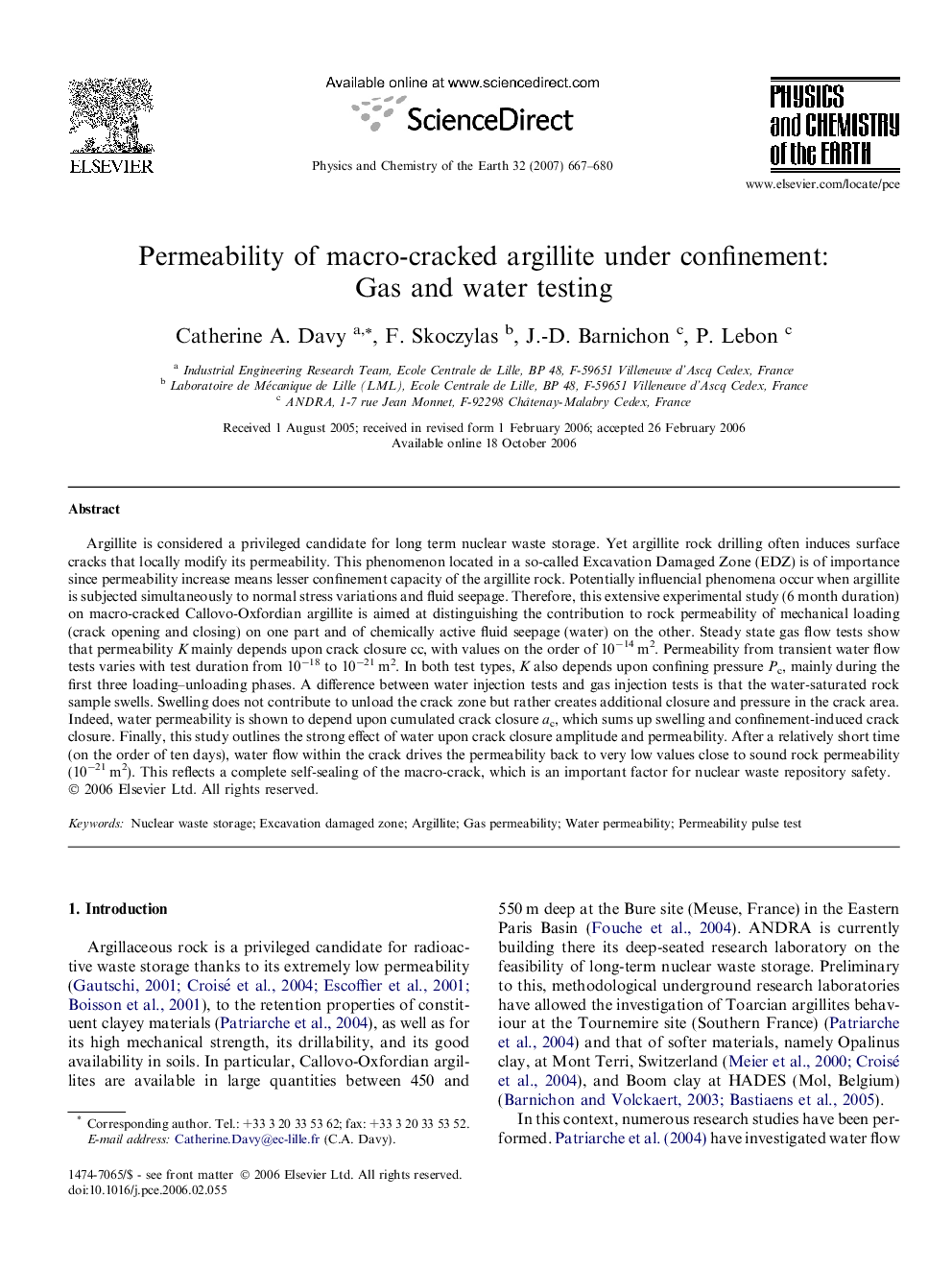| کد مقاله | کد نشریه | سال انتشار | مقاله انگلیسی | نسخه تمام متن |
|---|---|---|---|---|
| 4722116 | 1639404 | 2007 | 14 صفحه PDF | دانلود رایگان |

Argillite is considered a privileged candidate for long term nuclear waste storage. Yet argillite rock drilling often induces surface cracks that locally modify its permeability. This phenomenon located in a so-called Excavation Damaged Zone (EDZ) is of importance since permeability increase means lesser confinement capacity of the argillite rock. Potentially influencial phenomena occur when argillite is subjected simultaneously to normal stress variations and fluid seepage. Therefore, this extensive experimental study (6 month duration) on macro-cracked Callovo-Oxfordian argillite is aimed at distinguishing the contribution to rock permeability of mechanical loading (crack opening and closing) on one part and of chemically active fluid seepage (water) on the other. Steady state gas flow tests show that permeability K mainly depends upon crack closure cc, with values on the order of 10−14 m2. Permeability from transient water flow tests varies with test duration from 10−18 to 10−21 m2. In both test types, K also depends upon confining pressure Pc, mainly during the first three loading–unloading phases. A difference between water injection tests and gas injection tests is that the water-saturated rock sample swells. Swelling does not contribute to unload the crack zone but rather creates additional closure and pressure in the crack area. Indeed, water permeability is shown to depend upon cumulated crack closure ac, which sums up swelling and confinement-induced crack closure. Finally, this study outlines the strong effect of water upon crack closure amplitude and permeability. After a relatively short time (on the order of ten days), water flow within the crack drives the permeability back to very low values close to sound rock permeability (10−21 m2). This reflects a complete self-sealing of the macro-crack, which is an important factor for nuclear waste repository safety.
Journal: Physics and Chemistry of the Earth, Parts A/B/C - Volume 32, Issues 8–14, 2007, Pages 667–680